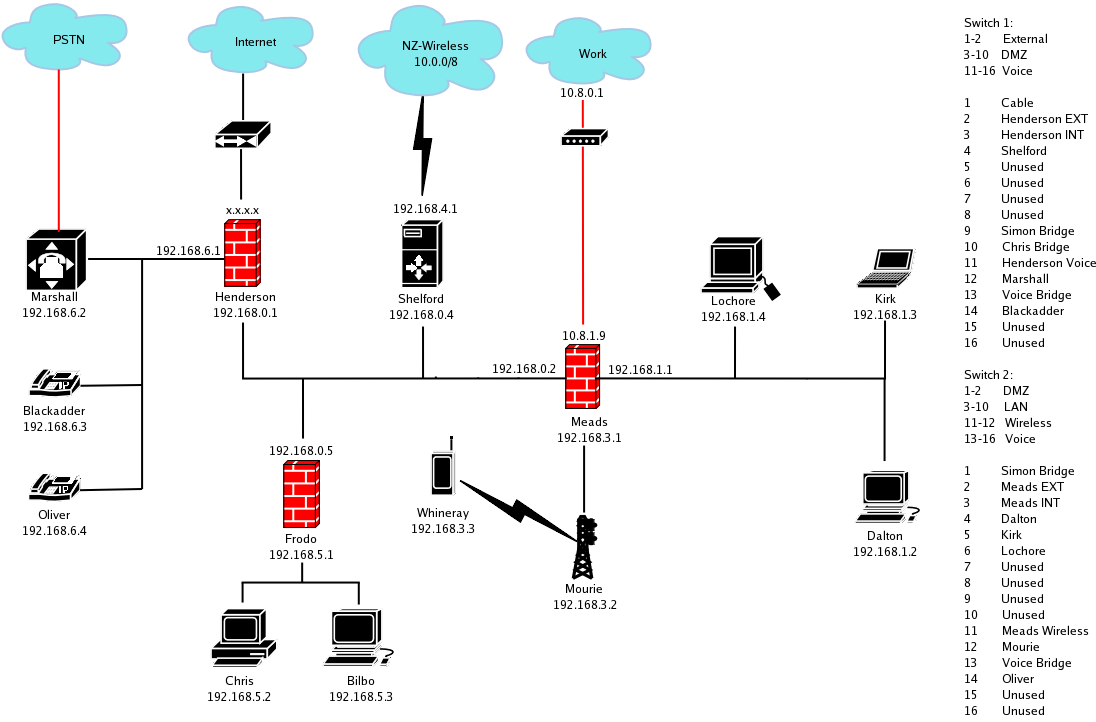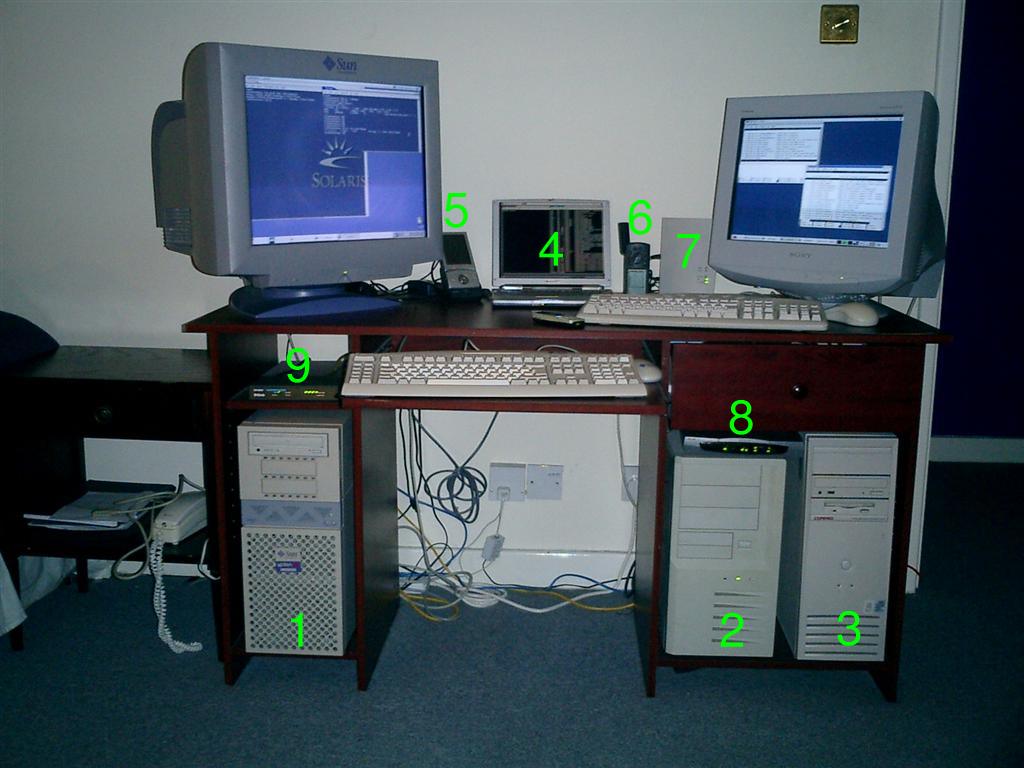| Name | Address | System | Operating
System | Comments |
| Lochore | 192.168.1.4 | Sun Ultra-30, UltraSparc II 250,
760MB
RAM | Solaris 9 | 1 Workstation and development server |
| Meads | 192.168.0.2 192.168.1.1
192.168.3.1 192.168.2.1 (virtual) |
Pentium 166, 32MB RAM | Linux 2.4 | 2 Headless.
Routing, Firewalling (IPTables), IPSec (Free S/Wan) | |
| Dalton | 192.168.1.2 |
Pentium IV 2.8Ghz, 1GB RAM | Linux
2.6 | Workstation |
| Kirk | 192.168.1.3 | Sharp Mebius
notebook, Pentium II 333, 128MB RAM | Linux
2.6 | 4 Workstation |
| Whineray | 192.168.2.2
192.168.2.3 (virtual) | Sharp Zaurus 5000
PDA | Linux 2.4 | 5 Wireless access device |
| Garmin | N/A | Garmin GPS
III+ | Garmin 2.06 | 6 Serial connection only |
| Mourie | 192.168.3.2 | ZCOMAX
XI-1450 Wireless access point | Firmware 3.2.2 | 7 128bit WEP,
routing mode, MAC address filtering |
| Fitzpatrick | 81.5.138.97
192.168.0.1 | Dlink-504 ADSL router |
R2.21.002.06.b2t10uk | 8 Routing, Filtering, PAT, NAT, DNS Currenty unused |
| Switch 1 | N/A | DSE XH7602 managed switch
| N/A | VLANs and QoS |
| Switch 2 | N/A | DSE XH7602 managed switch
| N/A | VLANs and QoS |
| Shelford | 192.168.0.4
192.168.4.1 | Dell Pentium II 266, 96MB RAM | Linux 2.4 | Web,
Mail, Public wireless AP, routing, filtering |
| Henderson | 192.168.0.1, 192.168.6.1 | Pentium 166, 128MB RAM
| Linux 2.6 | Headless. Routing, Firewalling (IPTables) |
| Marshall | 192.168.6.2 | Compaq Presario Pentium III, 256MB RAM
| Linux 2.4 | 3 Headless. Asterisk VOIP/PABX exchange |
| Blackadder | 192.168.6.3 | Grandstream Budgetone SIP phone
| N/A | Internet telephony |
| Oliver | 192.168.6.4 | Grandstream Budgetone SIP phone
| N/A | Internet telephony |

